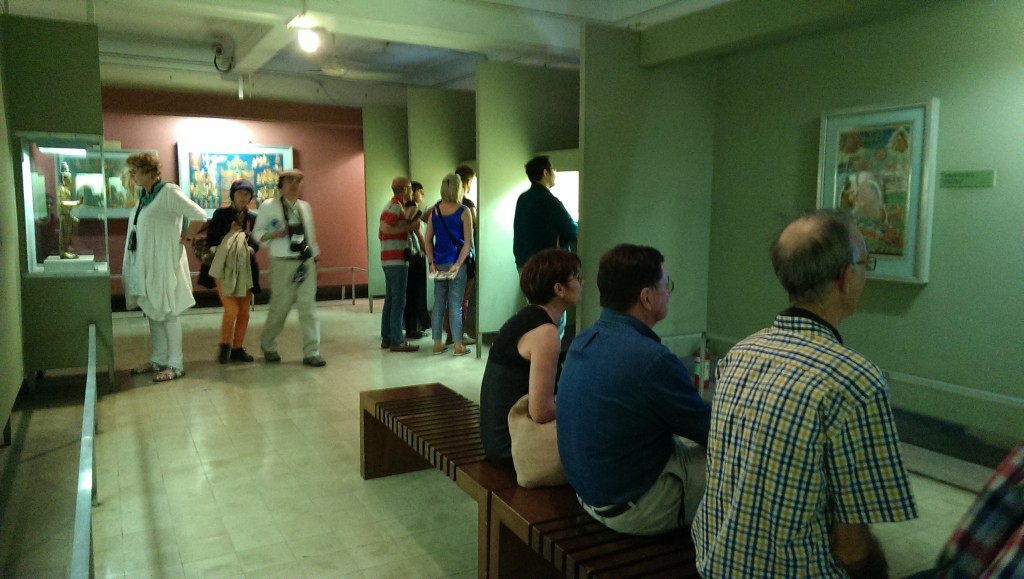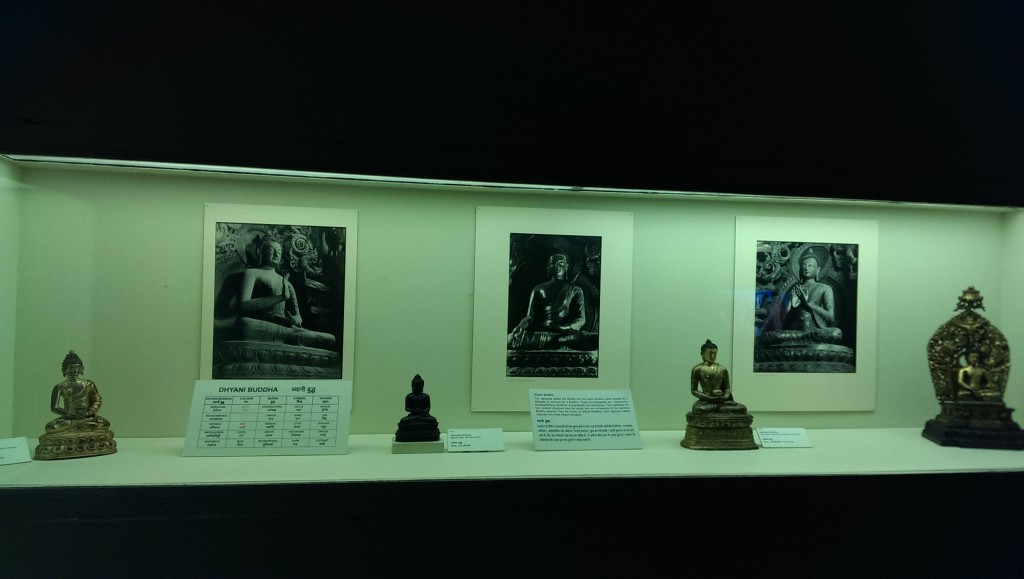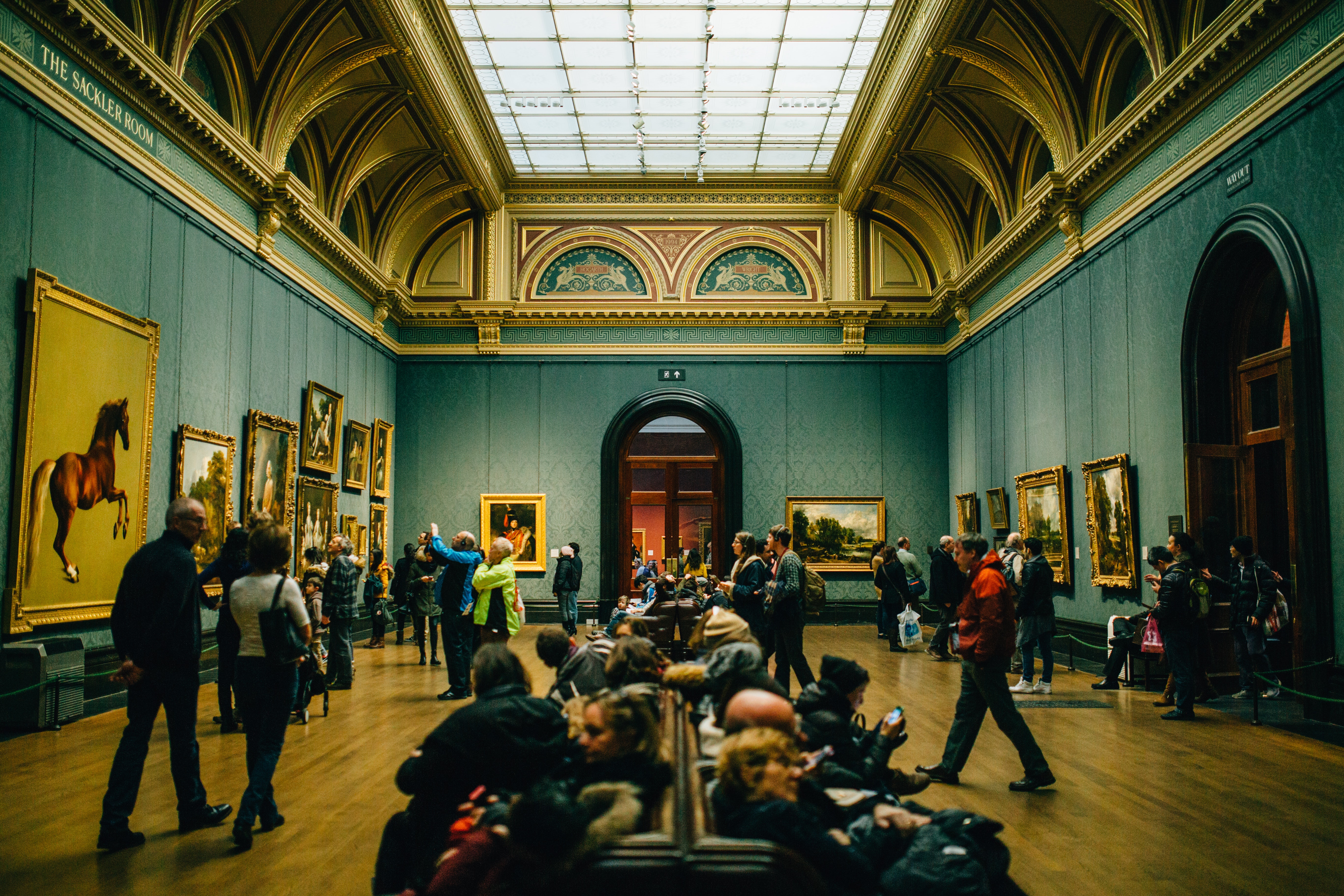I have been a student of art history and a professional working in the field of art galleries and museums for more than a decade. I meet and interact with countless people in my line of work and beyond, at workshops and conferences and through my own social network. Not everyone I know belongs to the art gallery and museum industry. Being a lover of art and museums, however, it does come as a surprise when I meet people who have never visited a museum in their life!

A group of tourists watching an informative video at the CSMVS (formerly Prince of Wales Museum) in Mumbai / Photo courtesy: Viral Kothari and Nilofar Shamim Haja
Tourists, school students, college students studying art, architecture and design, guides, professors, and others working in the cultural field are the ones who visit the museums. The rest of us, the bankers, doctors, businessperson, or IT entrepreneurs in my circle, don’t really care nor have any interest in their local museums. Of course, when most of us vacation abroad, we do make it a point to visit all the major cultural institutions and heritage sites, particularly in the UK, U.S. and Europe. Why this dichotomy?
Why do most Indians not prefer to visit a museum? One can think of various reasons. As a museum professional, armed with first-hand interaction with museum visitors and research about visitor attitudes towards exhibits, primary reasons for low footfalls at the museum include – lack of knowledge about such places coupled with a sense of doubt or fear about whether they will be allowed to enter such places, lack of museums nearby, lack of funds to visit these spaces, lack of time or other priorities at home (sports, entertainment, family functions), and lastly, genuine lack of interest.

Buddhist Gallery at the CSMVS (formerly The Prince of Wales Museum, Mumbai) / Photo courtesy Viral Kothari and Nilofar Shamim Haja
For cultural practitioners, the one reason that can be influenced is ‘genuine lack of interest in museums.’ How do we go about positively changing people’s attitude towards a site and space rich with the possibilities of discovery, learning and leisure? The authors of the book The Museum Experience Revisited points out that the reason why people do or don’t visit museums is best explained by underpinning it with “…issues of leisure values and personal history.” Several factors go into making someone culturally aware and outgoing, “but these factors are unlikely to in and of themselves provide a complete explanation of museum-going”.
What are leisure values and personal history? Leisure values are benefits associated with leisure activities. For example, what are the benefits of visiting a museum versus a mall? The questions people base their decisions on are: is the environment pleasant? Is it a place where one will be comfortable? Are there things to do or places to see, learn or be challenged, is it relaxing and child-friendly, is there a café or place to eat, can I buy something, are there toilets, is there parking, and a host of other convenience-related factors.
Personal history is the perception associated with museums based on past experience. If one has a perception that a museum will fulfil one or more specific personal needs, then that person is likely to visit a museum. However, if these needs are not met, then one looks for alternative options to fulfil them. A shopping mall is increasingly becoming a popular choice for many Indians to fulfil their needs. There are lessons to be learnt from the malls that can be implemented in our museums. A mall provides everything associated with leisure, under one roof. For instance: movies, shopping, eating, games, facilities like washrooms, play area for kids, parking, proper signage, disability access, and accessibility all add up to the total experience.
Attitudes and notions change over a period of time. Our museums too could be a weekend destination, especially for the local populace. But first, we need to believe that museums are not just spaces for the culturally aware and the intellectual, or students and scholars studying the subject. Most importantly, museums are not only about learning or acquiring knowledge; they can be dynamic spaces for exploring, interaction, play, and leisure.
How do we transform museums into spaces of leisure? Dear readers and curators, we welcome your responses about your experiences at the museum. Send us an email or Tweet to Rereeti.
About the Author
 Tejshvi Jain is the founding director of Rereeti and worked at the National Gallery of Modern Art, Bangalore prior to setting up this non-profit organization.
Tejshvi Jain is the founding director of Rereeti and worked at the National Gallery of Modern Art, Bangalore prior to setting up this non-profit organization.








Most of the museum curators in the Philippines have the same concerns as well. People here were only able to visit museums during their school field trips when they were kids. I think the problem lies with the insufficient education at the grassroots level about the values and importance of knowing and loving your heritage. Museums cannot compete with malls if the person is not interested to begin with.
Interesting post. Very nice read for someone who loves museums like me.
You must try Finnish museums – they are very interactive. For me, it is the key to success.
For example, there is a cold room with a -4 C temperature, and there is a hole with the wind with the same temperature. You must put your hand in this hole to understand how wind can make you feel colder at the same temperature. Sounds very obvious, but the effect exceeded my expectations!
And the most simple but effective trick in one of the Finnish museums – there is a stand describing the density of different sorts of wood, and there are samples of the woods in the same size, and you can grab them into your hand to feel the difference. I am an adult man, but it was awesome, really, no jokes.
Both such simple yet refreshing ways to bring interaction into the museum! We completely agree – making museums interactive is the most effective way to get more audiences interested in them. Thank you for these examples from Finnish museums 🙂